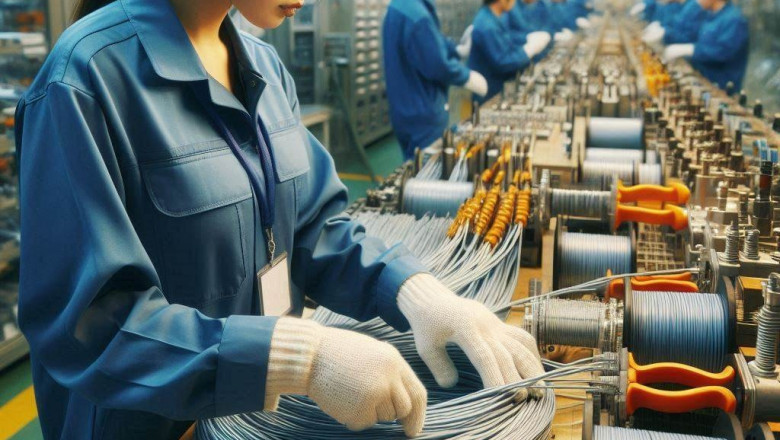views
Submersible flat cables play an essential role in powering underwater systems, from pumps to motors and other submerged machinery. Since the equipment functions in hostile environments, submersible flat cables require considerable strength and reliability. But one is often curious to learn about how these specialized cables are made. From choosing strong materials to optimizing the manufacturing process with precision, creating underwater flat cables requires a blend of sophisticated engineering and meticulous quality control. This guide discusses the materials used and how the step-by-step manufacturing process ensures that such cables are waterproof and survive extreme conditions.
Submersible Flat Cable Manufacturing: Process & Materials
Manufacturing submersible flat cable requires all the more careful process for durability, flexibility, and resistance against harsh underwater conditions. This starts by selecting only quality raw materials, starting from high-quality electrolytic-grade copper with PVC (polyvinyl chloride), or XLPE (cross-linked polyethylene) insulation, and a robust outer sheath of PVC or rubber for protection. The copper conductor is first drawn into fine wires and then stranded for optimal conductivity and flexibility. These stranded conductors are coated with an insulating layer of PVC or XLPE through the extrusion process, which would make them resistant to water and electrical leakage. Numerous insulated cores are laid side by side to form this flat configuration. This core assembly is protected with an outer sheath through the process of extrusion, which resists mechanical damage, abrasion, and exposure to chemicals. Strict quality control tests, such as high-voltage testing, tensile strength analysis, and water resistance tests, are done on the cable before it is packaged and shipped to the customers.
What things Submersible Flat Cable Manufacturers needs to know for quality assurance?
The essential factors that the submersible flat cable manufacturers need to follow for quality assurance to ensure that their products are performing reliably in underwater environments include high-quality raw materials such as pure electrolytic grade copper for conducting, as well as durable PVC or XLPE for insulation purposes to enhance long service life and resistance to water and chemicals. Industry standards such as IS, IEC, or BS must be adhered to for keeping consistency and safety. Manufacturing should add sound extrusion techniques in the manufacture of insulation and sheathing to avoid cracks or weaknesses. Stringent tests such as high voltage endurance, water immersion resistance, tensile strength, and flexibility tests need to be carried out to ensure its durability under harsh weather conditions. Moreover, manufacturers should maintain quality control procedures at every production stage-from raw material inspection, intermediate stages, to final packaging-to ensure perfect performance and satisfaction.
Key Features and benefits of Submersible Flat Cable
Submersible flat cables are invented with unique features and benefits to fit an underwater application. High-quality electrolytic-grade copper conductors ensure excellent conductivity, energy efficiency, along with PVC or XLPE insulation providing superior water and chemical resistances as well as abrasion. They have a flat design that minimizes space usage; they prevent tangling and help install them easily in narrow or confined spaces. These are highly flexible cables, so they can withstand mechanical stresses and repeated bending without damage. Some benefits include reliable performance in extreme underwater conditions, enhanced safety due to excellent electrical insulation, and long operational lifespan, which reduces the replacement needs. Their robust outer sheath offers resistance to such environmental factors like moisture, oil, or high temperature, offering them as an integral part of submersible pumps and underwater electrical settings.
Manufacturing submersible flat cables is the epitome of combining high-quality materials and delicate engineering procedures. From the quality of conductors and insulating materials to applying sophisticated assembling techniques and testing methods, every part of this process is conceived to produce durability, flexibility, and resistance to water and a severe environment. The need to know about these materials and processes underlines their crucial role in the application underwater to ensure safety and efficiency. Quality and innovation still lead manufacturers to meet the needs of industries relying on submersible flat cables in order to ensure fluent performance.






















Comments
0 comment